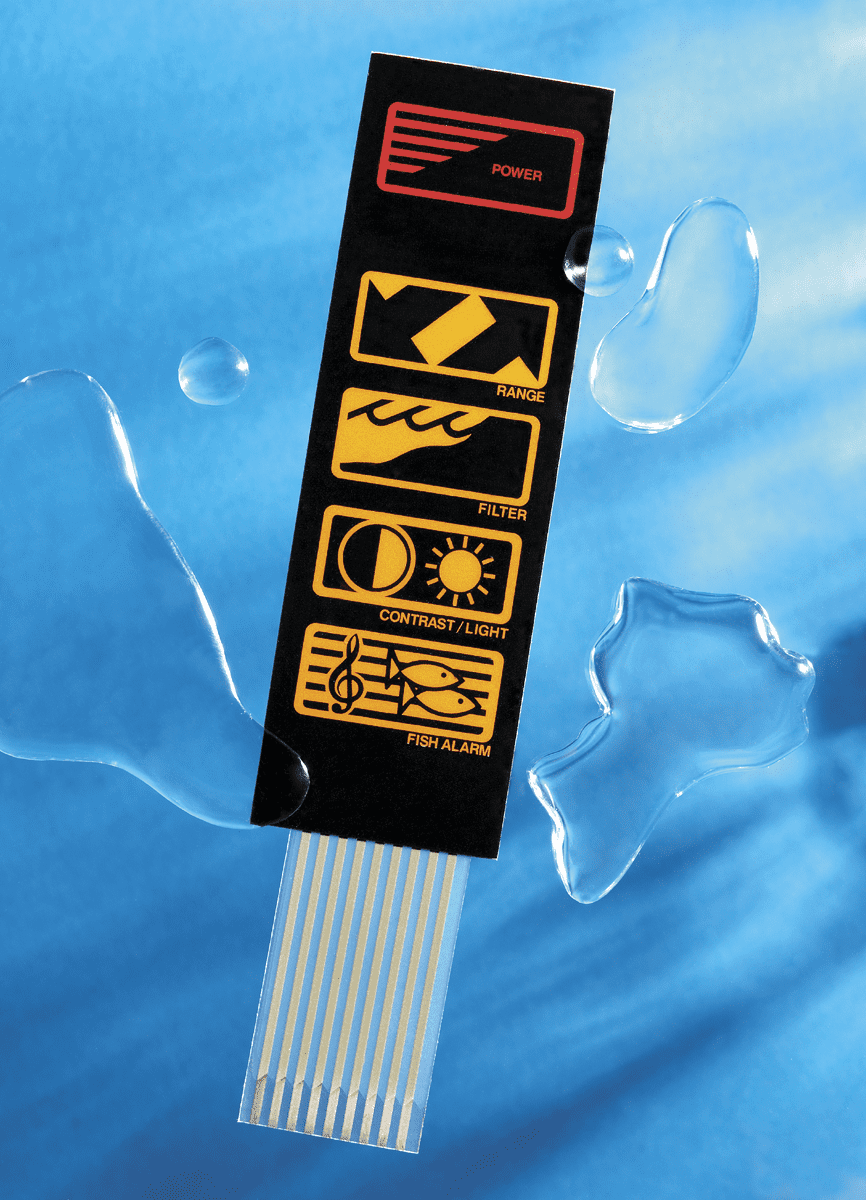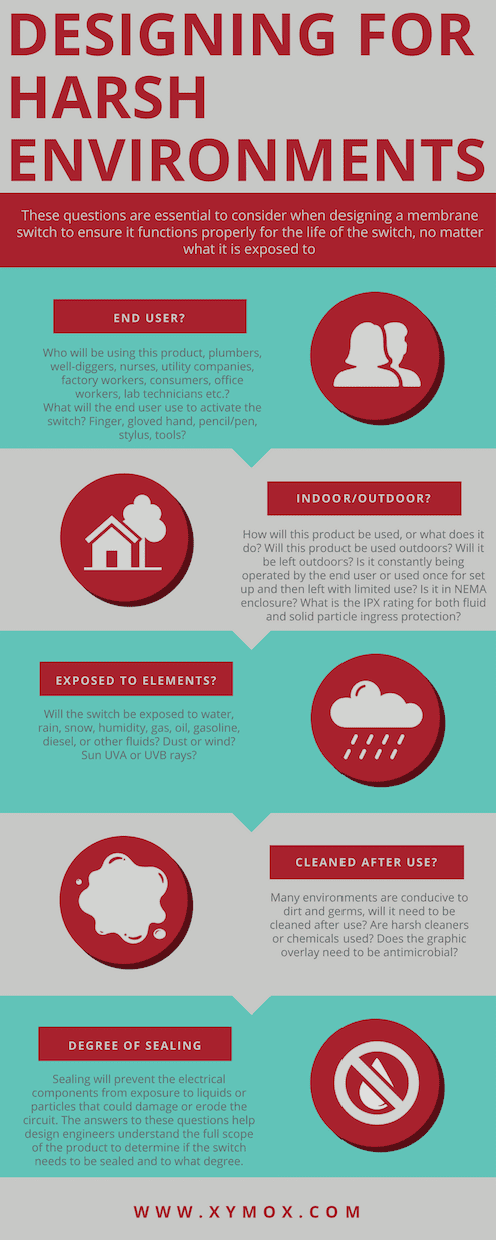It is no secret that electronics and variable outdoor elements do not play well together. Can’t we all just get along? Of course we can, it’ll just take some planning to make sure everyone is happy (you included)!
Since graphics are mounted on the front of membrane panel they will see plenty of abuse, and be subject to direct exposure to the elements. In almost all cases people opt to use a polyester over a polycarbonate graphic, because polyester offers better flexure durability (over a tactile dome), chemical and abrasion resistance, and dielectric strength (for ESD resistance).

 Some manufacturers make grades of graphic polyester that are specifically textured to resist abrasion and scratches. Other grades provide protection against temperature extremes, high humidity, and strong levels of ultraviolet light exposure from the sun. The UV ray protection helps graphics and clear windows retain their clarity and color by resisting fading or yellowing over time.
Some manufacturers make grades of graphic polyester that are specifically textured to resist abrasion and scratches. Other grades provide protection against temperature extremes, high humidity, and strong levels of ultraviolet light exposure from the sun. The UV ray protection helps graphics and clear windows retain their clarity and color by resisting fading or yellowing over time.

The body of a membrane switch is made up of layers of PSA (pressure sensitive adhesive). If these layer edges are exposed to the elements (water, liquid, dust, etc.), the elements can work their way through the layers and this can be accelerated by fluctuating temperature and humidity. If a part is outdoors this need to be accounted for during the designing process. One solution is to use a gasket material to protect the switch edges; it is preferred to use the most aggressive adhesive available, if possible. In this regard VHB (Very High Bond) tapes can act a s a great sealing mechanism, but the correct VHB and thickness must be selected, for adhering to the switch and housing. Proper adhesive selection is a must to protect the electronics!

It is critical to take into account the tail location on the switch and the housing. Any design engineer would recommend designing the tail internal to the part, meaning the tail and conductive circuitry are printed on the same piece of polyester. If a bonded tail is preferred, it is recommended to use a gasket or consider using RTV (Room-Temperature-Vulcanizing) silicone to fill the tail slot in the housing so no contaminants can reach the electronics.
An improved alternative to a gasket is to provide a heat sealed adhesive that removes all air trapped between the layers. The bond should “wet out” and provide an interface that keeps contaminants out of the switch. There is an added cost for this process but it can be great insurance when parts must reside outdoors.
Interested in learning more about designing a membrane switch for harsh environments? Check out this infographic!
(click to enlarge)

